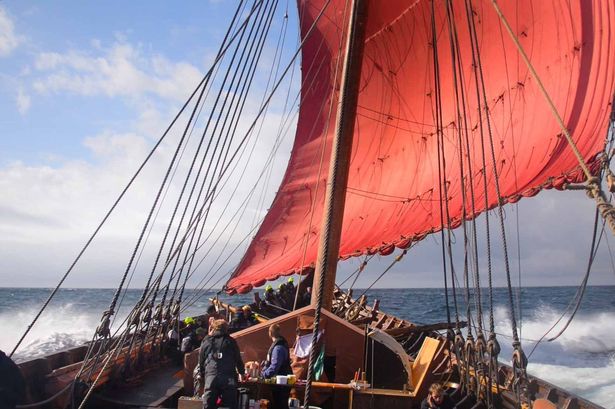anatomy of viking ships
Clinker built
Vikings built their ships using the clinker method, which
means the outside of the ship was built first, and then the
frame was added later. They did this by starting with the
Keel, a long board that travels from one end of the ship to
the other. Sterns are then attached to both ends of the Keel
(this where the iconic dragon head would be placed). The
planks are then attached to the keel and stern using iron
rivets. As Figure 1 demonstrates, the planks overlap one
another, increasing the sturdiness of the ship's outside.
In addition to the clinker method, Vikings were very
delicate in cutting the wood for the ships. Boards were cut
out of trees with axes instead of saws, to make sure the
wood was cut with the grain. Their delicacy in carving,
provided the vikings with stronger wood for their ships.

Carvel built
Opposite to the Vikings, ships were built by other
Europeans of the same period, using the carvel method. This
method involved building the frame first and then building
the outside of the ship around the frame to prevent water
from pouring in. The planks of carvel boats are not
overlapped like the vikings ship's, so planks don't add to
the sturdiness of the ship. This places the pressure of the
ship's sturdiness into the frame, often making the frames
heavier than those of the viking ships.

